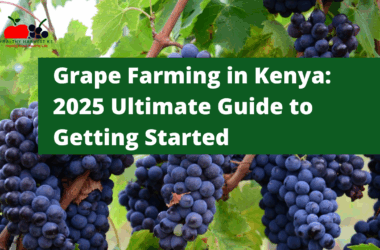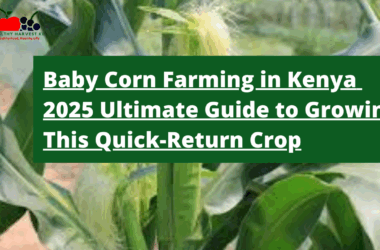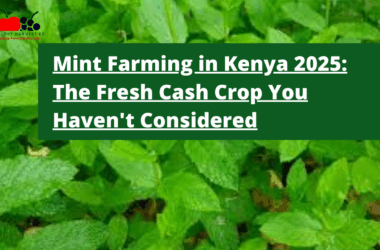In a country where agricultural innovation meets entrepreneurial spirit, black soldier fly (BSF) farming has quietly been revolutionizing Kenya’s approach to sustainable agriculture. It’s not just another farming trend – it’s a lucrative opportunity that’s creating a new generation of agripreneurs turning literal waste into serious wealth. Let’s dive into how these tiny insects are making a massive economic impact across Kenya.
What Makes Black Soldier Fly Farming Kenya’s Next Big Thing
Black soldier fly farming isn’t just cool – it’s revolutionizing how Kenyans think about agriculture and waste management. These industrious insects, known scientifically as Hermetia illucens, have a surprisingly short lifecycle that makes them perfect for commercial farming.
Unlike your typical house flies, black soldier flies don’t carry diseases and aren’t considered pests. They’re simply efficient little protein factories – consuming massive amounts of organic waste and transforming it into valuable biomass in record time.
The most impressive part? These larvae grow at an almost unbelievable rate – increasing their body weight approximately 15 times in just 12-14 days after hatching. That rapid growth cycle means quick returns on investment for farmers who know what they’re doing.
The Startup Costs: What You Need to Get Going
Starting a BSF farm doesn’t require the kind of capital you’d need for traditional livestock operations. Here’s what your initial investment looks like:
Essential Infrastructure
Your BSF operation needs specific protective structures to thrive. Insect nets are crucial materials for farming structures, costing about KES 110 per square meter in Kenya. These specialized nets feature small pores that allow air circulation while keeping predators out and your BSF contained.
Farm structures can be constructed from either wooden materials or steel profiles with insect nets attached to the outer surface. While the initial setup requires some investment, it’s significantly less than what you’d need for traditional livestock operations.
The Production Cycle Breakdown
The BSF farming process follows a straightforward cycle:
- Breeding and egg collection: Adult flies breed in controlled environments where their eggs are collected
- Larvae feeding: Once hatched, larvae are fed prepared organic waste materials
- Growth period: Larvae rapidly consume waste for 12-14 days
- Harvesting: Operators separate frass (processed waste) from mature larvae
- Processing: Larvae are processed, dried, and prepared for sale as animal feed
This relatively simple process requires minimal technology but demands consistent management practices and quality control measures to ensure optimal production.
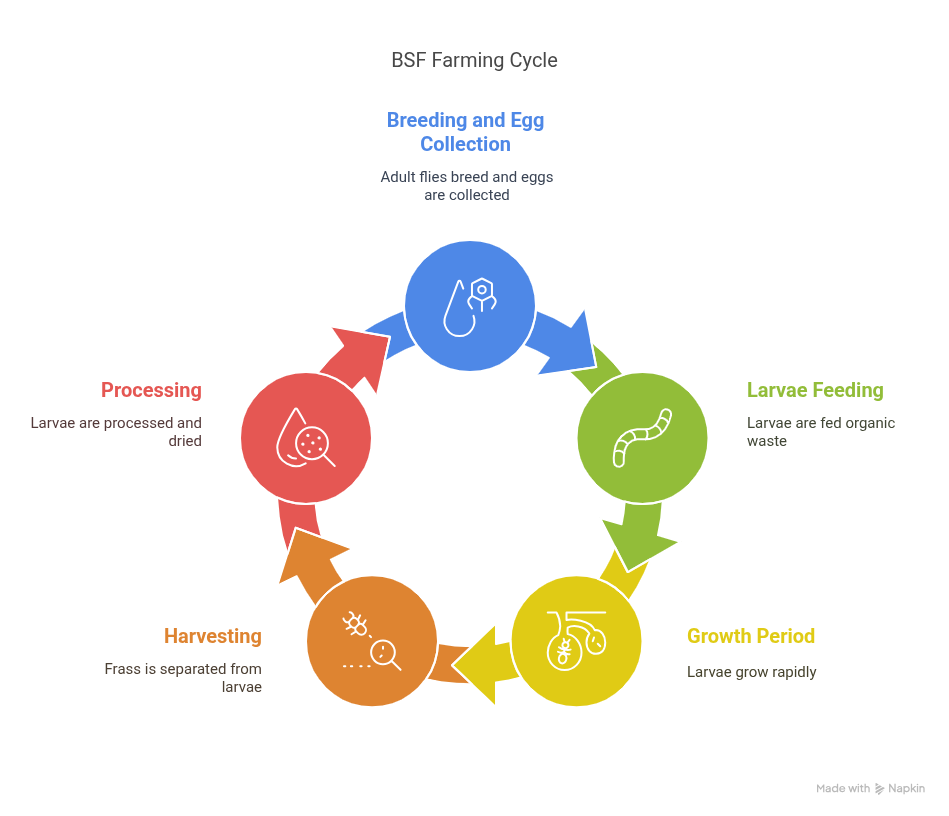
Multiple Revenue Streams: How BSF Creates Wealth
What makes BSF farming particularly attractive is the diverse revenue streams it generates. This isn’t a one-trick pony – it’s an entire ecosystem of profit opportunities.
Direct Sales of Protein-Rich Feed
BSF larvae represent gold in the agricultural world – containing a remarkable 42-45% protein content. This makes them an ideal supplement for feeding fish, poultry, and other livestock.
Compared to traditional protein sources like fishmeal or soy, BSF larvae can be produced more efficiently and sustainably. For farmers, this translates to reduced feed costs while maintaining high nutritional standards. For BSF producers, it means a steady demand for a premium product.
Organic Fertilizer Production
Beyond the larvae themselves, BSF farming produces frass fertilizer as a valuable byproduct. This nutrient-rich organic fertilizer enhances soil fertility, improves soil structure, and reduces nutrient leaching.
Farmers across Kenya are increasingly using this organic fertilizer to boost crop yields while reducing dependency on expensive chemical fertilizers. As a BSF entrepreneur, this gives you a secondary product line with its own dedicated market.
Knowledge Transfer and Consulting Services
As the industry grows, experienced BSF operators can create additional income streams through knowledge transfer:
- Training new farmers on proper techniques
- Offering consulting services for operation optimization
- Collaborating on research initiatives with agricultural institutions
This knowledge economy creates additional income possibilities while expanding the industry’s reach throughout Kenya.
Value-Added Product Development
The real money often lies in value addition. Innovative entrepreneurs are developing:
- Specialized feed formulations for specific livestock needs
- Processed and packaged organic fertilizer products
- Targeted solutions for different agricultural subsectors
These value-added products typically command premium prices, significantly enhancing profitability for those willing to invest in product development.
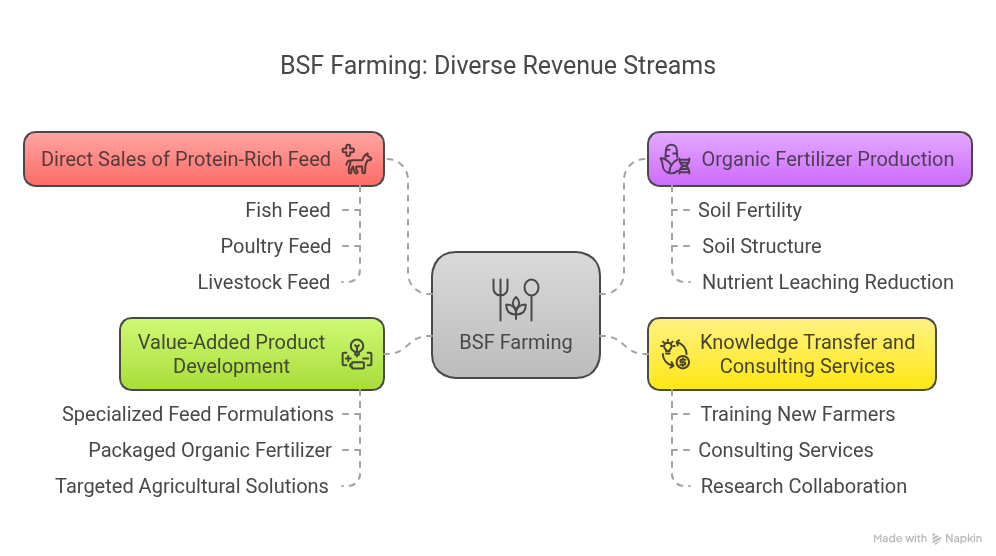
Success Stories: Real Kenyans Cashing In on BSF
The proof is in the profits. Let’s look at three Kenyans who’ve transformed their lives through BSF farming.
Francis Muiruri: The Poultry Pioneer
In Witethie village, around 40 kilometers from Nairobi, Francis Muiruri (known locally as “Francis wa Kuku”) has integrated BSF farming into his substantial poultry operation housing 4,000 chickens.
Facing the universal farmer’s challenge of rising feed costs, Francis turned to BSF larvae as a cost-effective protein source for his birds. His success demonstrates how BSF farming can complement existing agricultural enterprises – creating a self-sustaining ecosystem that reduces costs while increasing profits.
Everlyne Songoi: From Struggle to Success Story
Everlyne Songoi’s journey shows the transformative potential of BSF farming for young entrepreneurs with limited resources. Growing up in a poor farming family in Kitale, Everlyne lacked resources for higher education.
After an unsuccessful venture selling clothes, she established a BSF farm in Eldoret in January 2021 with support from Fair & Sustainable Consulting. Today, she manages workers handling various aspects of the operation, from collecting eggs to processing larvae, creating a sustainable business that’s transformed her economic prospects.
Winnie: Engineering Innovation in the BSF Value Chain
At just 23 years old, Winnie, an energy engineer in Kiambu, has found her niche in the BSF value chain. She’s not just selling wet larvae to farmers – she’s exploring innovative applications of BSF in energy production.
Her approach demonstrates how young professionals can engage with different segments of the BSF value chain without necessarily handling all primary production aspects. For tech-minded entrepreneurs, BSF offers fertile ground for innovation beyond just farming.
How to Position Yourself in the Growing BSF Market
Ready to jump into the BSF game? Here’s how to position yourself for maximum profit:
Market Diversification Strategy
The smartest BSF entrepreneurs aren’t putting all their eggs (or larvae) in one basket. They’re diversifying across multiple customer segments:
- Poultry farmers: Looking for cost-effective protein alternatives
- Fish farmers: Seeking sustainable feed options
- Crop farmers: Needing organic fertilizer solutions
- Feed manufacturers: Requiring consistent protein sources
By developing products for different segments, you create multiple revenue streams and insulate yourself from market fluctuations in any single sector.
Value Chain Positioning
Consider where your skills and resources position you best in the BSF value chain:
| Value Chain Position | Key Activities | Initial Investment | Profit Potential |
|---|---|---|---|
| Primary Production | Breeding flies, raising larvae | Moderate | Medium-High |
| Processing | Drying, grinding, packaging | High | High |
| Distribution | Moving product to end users | Low-Moderate | Medium |
| Consulting/Training | Knowledge transfer | Low | Medium |
| Value-Added Products | Creating specialized formulations | Moderate-High | Very High |
The most successful entrepreneurs often start in one segment and gradually expand along the value chain as they build capital and expertise.
Institutional Support You Can Leverage
Kenya benefits from strong institutional support for BSF development. The partnership between the International Centre of Insect Physiology and Ecology (ICIPE) and the Australian Centre for International Agricultural Research (ACIAR) provides valuable resources:
- Training programs
- Research assistance
- Knowledge sharing networks
- Market development support
Additionally, initiatives like the Global Center on Adaptation’s (GCA) project in Mukuru, Nairobi, are establishing BSF units to drive climate resilience and youth employment.
Overcoming Challenges in the BSF Business
Like any venture worth pursuing, BSF farming comes with its challenges. Here’s how to navigate the potential pitfalls:
Technical Hurdles and Solutions
BSF farmers face several technical challenges, including forensic mite infestations and parasites that can threaten colonies. Proper substrate management is crucial to mitigate these risks.
Additionally, maintaining optimal environmental conditions for breeding and growth requires careful monitoring and adjustment. The good news? These challenges are well-documented, and solutions exist for entrepreneurs willing to invest in proper training and equipment.
Changing Consumer Perceptions
Despite the benefits, cultural perceptions about insects present another challenge. Many people associate insects with dirtiness or disease, creating an “eek factor” that initially inhibits adoption.
However, as market experience shows, changing mindsets is possible through education and exposure. Just as cricket consumption has gained acceptance in parts of Kenya, BSF products are finding their market as consumers recognize their value and safety.
Business Development Essentials
Successful BSF operations require both technical knowledge and business acumen. Entrepreneurs must understand market dynamics, cost structures, and value chain positioning to maximize returns.
Sound business practices, including market research and cost analysis, are essential to mitigate risks in BSF ventures. The most successful operations combine agricultural expertise with solid business fundamentals.
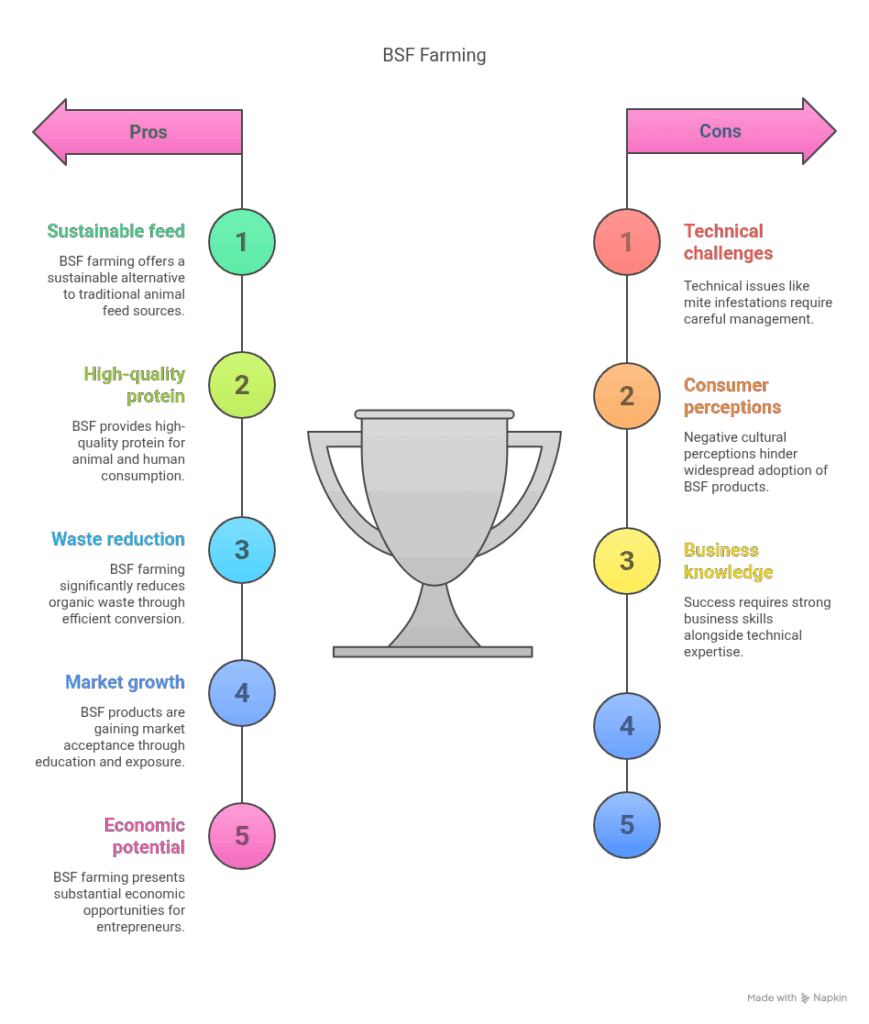
Why Now Is the Perfect Time to Enter the BSF Market
The timing for BSF entrepreneurship in Kenya couldn’t be better. Here’s why the market is primed for growth:
Environmental Pressures Creating Opportunity
In urban areas like Nairobi, which produces nearly 6,000 metric tonnes of waste daily, the need for effective organic waste management solutions is critical. BSF larvae can process up to 75% of organic waste into valuable biomass – addressing a massive environmental challenge while creating economic opportunities.
As environmental regulations tighten and waste management becomes a greater priority, BSF farms are positioned to provide a crucial service while generating significant revenue.
Rising Feed Costs Driving Demand
Traditional protein sources for animal feed continue to increase in price, pushing farmers to seek affordable alternatives. With BSF larvae offering comparable nutritional value at potentially lower costs, demand is growing across Kenya’s agricultural sectors.
As more success stories emerge of farmers reducing feed costs through BSF integration, market adoption accelerates – creating a virtuous cycle of expansion for BSF entrepreneurs.
Sustainability Premium
Increasingly, consumers and businesses alike are willing to pay a premium for sustainable solutions. BSF farming’s significantly lower environmental footprint compared to traditional livestock farming positions its products for premium pricing in certain markets.
By requiring less land, water, and other resources, BSF operations can market their environmental credentials as a value-add, particularly to eco-conscious buyers and international markets.
Getting Started: Your Next Steps
Ready to transform waste into wealth through BSF farming? Here’s your action plan:
- Skill up: Connect with training programs through ICIPE or other agricultural institutions
- Start small: Begin with a manageable operation to master the technical aspects
- Focus on quality: Implement rigorous quality control from day one
- Diversify gradually: Expand your product line as you build expertise and capital
- Network strategically: Connect with other value chain players for mutual benefit
For aspiring BSF entrepreneurs, success depends on proper setup and infrastructure, consistent management practices, quality control measures, market diversification, and continuous learning.
The Future Is Flying High
Black soldier fly farming represents more than just an agricultural trend – it’s a transformative approach to creating value while solving pressing environmental challenges. The economic opportunities span from direct production to value addition to knowledge services, offering entry points for entrepreneurs with diverse skills and resources.
As Kenya continues to embrace innovative solutions to agricultural and environmental challenges, BSF farming stands at the intersection of sustainability and profitability. For ambitious entrepreneurs looking for the next big thing in agriculture, BSF farming offers a compelling proposition: turning waste into wealth while building a more sustainable food system.
The flies are taking off – are you ready to soar with them?








